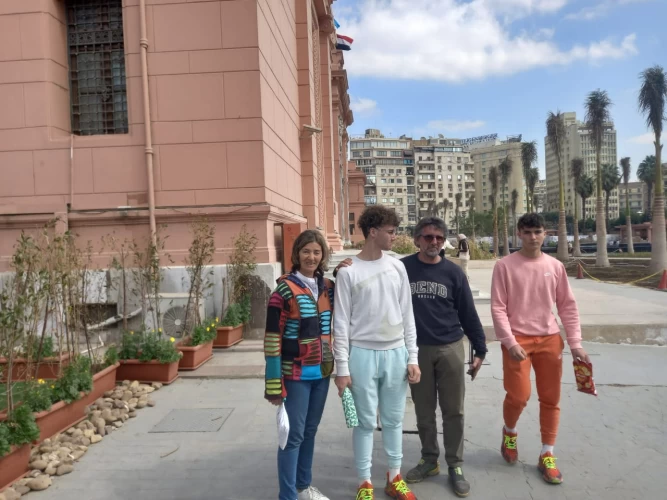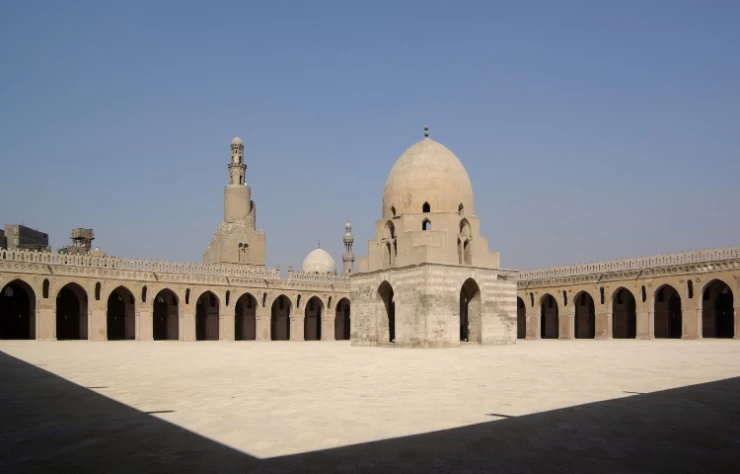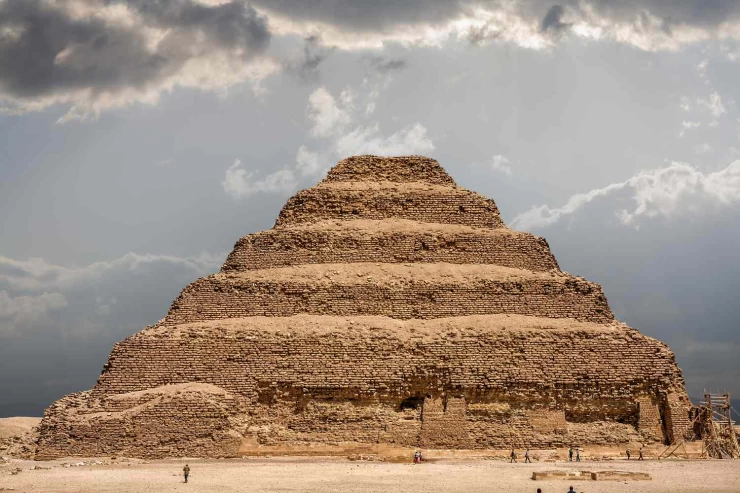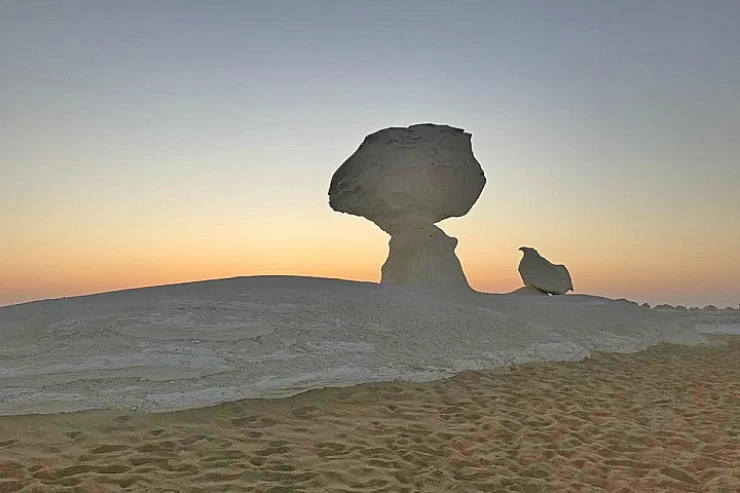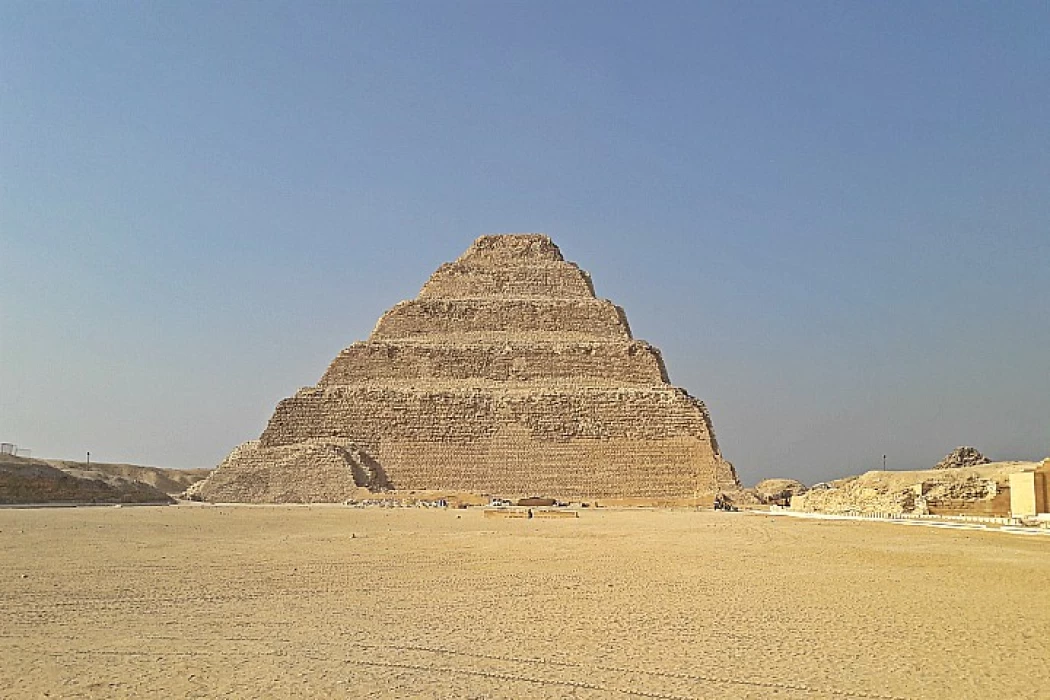
Necrópole de Saqqara
Saqqqara Necrópole
Saqqara é famosa principalmente por ter sido a necrópole real do antigo Reino até a terceira dinastia, e por hospedar a Pirâmide de Passo de Djoser, a pirâmide mais antiga já construída entre aquelas atribuídas à civilização egípcia.
Pirâmide de passos de Saqqqara
Saqqara é um dos vastos cemitérios e coisas para fazer no Cairo, cobre uma área de cerca de 7 por 1,5 km aproximadamente, uma antiga área funerária servindo como necrópole para os antigos reis egípcios e aristocratas também. A característica mais importante de Saqqara que tinha numerosas pirâmides, incluindo a famosa palavra Pirâmide de Degrau de Djoser, às vezes referida como Pirâmide de Degrau devido a sua base retangular (forma), bem como várias mastabas (palavra árabe que significa 'banco'). Localizada a cerca de 30 km ao sul do atual Cairo,
A Pirâmide de Passos é o monumento mais importante a ser visto durante muitas de nossas excursões personalizadas pelo Egito. Você poderá chegar lá através de muitas das "Egypt Day Tours".
Se você começar seus pacotes de viagem ao Egito em Luxor ou Hurghada, não deixe de reservar suas excursões ao Cairo para chegar lá. ou mesmo reservar um vôo de ida e volta ao Cairo e desfrutar de uma variedade de Excursões ao Cairo a partir do Aeroporto.
A famosa Pirâmide Saqqara, datada da 3ª dinastia (2667-2448 a.C.), um par de centenas de anos antes da Grande Pirâmide e foi o primeiro complexo construído inteiramente em pedra. Além disso, revela uma extensa inovação estrutural para a formação das Pirâmides de Gizé e outras pirâmides posteriores na 4ª dinastia e mais tarde. como é a primeira Pirâmide (escalonada) feita de 6 mastabas ou degraus e às vezes referida como a Tumba dos Degraus devido a sua base retangular.
A área é um local obrigatório se você estiver reservando alguma das excursões ao Egito ou de nossas variedades de excursões do Cairo.
A localização do cemitério é ao sul de Abusir e Dahshur ao sul. Alguns cientistas acreditam que o nome (Saqqara) não deriva da divindade funerária do Antigo Egito, Sokar, mas aparentemente, de uma tribo berbere local chamada ( Beni Saqqara ). A área de trabalho de Dahshur a Giza foi usada como necrópole pelos cidadãos de Memphis várias vezes, e foi nomeada como Patrimônio Mundial pela UNESCO em 1979.
Mais de dez outras pirâmides e um grande número de túmulos e templos funerários estão espalhados pela área da Pirâmide de Passo de Djoser. e todo o local da Necrópole de Saqqqara é uma testemunha da grandeza das primeiras dinastias do Antigo Egito.
Você pode reservar um dos passeios listados abaixo para explorar a gigantesca Pirâmide de Passos em Saqqqara e muitos outros monumentos como a Pirâmide do Rei Teti e o Rei Unas, bem como os túmulos lindamente decorados dos Nobres enterrados aqui no famoso Cemitério que é considerado como uma porta de entrada para o céu tanto para a realeza como para os altos funcionários.
Entre os túmulos dos nobres em Sakkara está o túmulo de Kagemni que foi genro do próprio rei Teti durante a 6ª dinastia.
Pacotes de Viagens do Egito e Passeios do Dia do Egito Incluindo Saqqara e mais locais históricos e lugares incríveis:
Se você quiser saber mais sobre um lugar chamado Gizé e ver como ele é, há um site especial chamado How Many Pyramids Are In Egypt (Quantas pirâmides existem no Egito). Ele contém muitas informações e imagens que podem ajudá-lo a saber mais sobre Gizé e sua história.
To the southwest of Cairo and on the verge of the desert, there exists Saqqara, a design that can boast a lot about ancient Egyptian history, thus making it one of the archaeological sites. This vast expanse is known to be the extension of the burial grounds of Memphis City. Saqqara bears many interesting structures; some of them have managed to survive for more than 4700 years, containing tombs of the pharaohs, nobles, and even sacred pets. The most famous structure in the area is the Djoser Step Pyramid, claimed to be the first real pyramid and considered the largest stone-made structure of its kind within the range.
For this reason, this paper seeks to examine the historical significance of Saqqara, its major landmarks, and the beauty of this ancient city.
A Brief History of Saqqara
The historical importance of Saqqara can be traced back to the Third Dynasty of Egypt around 2650 BCE when Pharaoh Djoser ordered the construction of his pyramid complex. The Step Pyramid, designed by the legendary architect Imhotep, was a transformation in building techniques, giving way from the ordinary mud brick mastabas, which were flat-roof tombs, to decorated pine stone architecture. Over time, Saqqara developed into a large burial area that contained tombs from various dynasties and ages in ancient Egypt's history, which were the Old Kingdom, Middle Kingdom, New Kingdom, and even the later periods.
Like the rest of Memphis and its Necropolis, a UNESCO World Heritage Site, Saqqara is of great importance from the point of view of archaeology and history. Because of the many pyramids, mastabas, temples, and burial complexes present in the site, it also explain the evolution of the Egyptian way of burying their dead, the religious factors involved, and even the development of structures for several centuries.
the Step Pyramid of Djoser: An Architectural Marvel
The most important feature of Saqqara is undoubtedly the Step Pyramid of Djoser—the first ever constructed pyramid and a stunning illustration of Egyptian brilliance. The pyramid has a height of about 62 meters and consists of six steps of diminishing size so that the pyramid takes on its usual stepped shape. The architect of the chaste was the first to use stones in grand structures and set stone slabs that would later develop into the true pyramids of Giza.
Encircling the pyramid itself is a series of courtyards, temples, and other religious structures, most of which were designed to benefit the king in the next world. This includes the South Court, in which visitors may observe the ruins of several ancient shrines and altars used for ceremonial purposes. There is a huge compound wall with 14 gates encircling the complex, one of which was to be used for functional purposes, representing the final resting place of the king with no interference from the outside world.
Within the Step Pyramid structure, there exists a rat’s nest of stairways and rooms. Although the primary burial chamber was taken during antiquity, archaeologists have found astonishing amounts of items and valuables that help understand the culture and practices of the ancient Egyptians.
Saqqara’s Step Pyramid aside, the site is replete with numerous burial places of high-ranking officials, nobles, and members of the royal family. Decorated with finely carved images and wall paintings, the ancient Egyptian tombs illustrate aspects of life in ancient Egypt, including normal activities, religious practices, and iconography.
Tomb of Ti
The Tomb of Ti is one of the more recognized tombs in the Saqqara region. Ti was a high-ranking government official during the Fifth Dynasty. The tomb is famous for its intricate bas reliefs of daily activities in which Ti is shown active, such as tending to crops, going fishing, and making offerings to the deities. These images are not only beautiful but also very helpful in grasping the social, economic, and cultural aspects of the Old Kingdom.
The Mastaba of Mereruka
La Mastaba di Mereruka is another notable recognition within the Saqqara tombs. This is among the most considerable and richly decorated tombs of the necropolis. Mereruka was the visier and a son-in-law of Pharaoh Teti. His tomb contains an incredible number of rooms, a whopping thirty-two chambers, the walls of which are covered with relief images of the highest quality. The events depicted in these images give a detailed picture of many sectors of the ancient Egyptian civilization, ranging from medical practices and religious rites to leisure and domesticity.
The Serapeum: burial sites for the Apis Bulls.
The Serapeum from Saqqara is another interesting aspect that is a structure that was built primarily for burying sacred bulls referred to as the Apis, who took the guise of the god Ptah. The Serapeum consists of a series of underground corridors and galleries containing large stone coffins where the remains of the sacred bulls were interred. This complex is indicative of the Ancient Egyptians’ great love for animals and their unique beliefs about the divinization of certain animals.
New Discoveries at Saqqara: Uncovering Ancient Secrets
Saqqara remains an active site of archaeological research and exploration, and new finds help in addressing previously unknown portions of the ancient Egyptian civilization. Tombs, coffins, and a number of artifacts from different epochs ranging from the Old Kingdom to the Late Period have in recent years been excavated.
The tomb of Wahtye, a priest from the Fifth New Kingdom, monumental as it is, has a very well-preserved tomb bearing fine wall paintings illustrating the life and religious activities of the above-mentioned priest. Another important discovery presents a cache of sarcophagi and anthropoid wooden coffins, most of which are decorated; some were even closed and painted with varnish. These excavated materials help not only to understand the history of the Saqqara area more profoundly but also to reveal the importance of Saqqara as an archaeological site even in these days.
For those who would like to visit Saqqara, this place may be regarded as a temporal adventure as well as a treasure of some of the fantastic historical sites that one can find in Egypt. Allow us to share with you some useful information that would be helpful during your visit:
How To Get There: Saqqara is approximately 30 km from Cairo city center, which is southwest of Cairo, and can be reached by car quite comfortably. A number of tours include a visit to Saqqara, most of which visit other sites as well that are in the vicinity, such as the Giza pyramids and the Dahshur regions.
What to Put On: Since the location of Saqqara is situated in the desert, it's important to wear a suitable dress, and a cap, and protect the skin with sunscreen. Some good walking shoes are advisable since the ground in some places might be rugged.
Guided Tours: Even though it is feasible to visit Saqqara without the aid of a tour, the positive aspect is that a tour does help in improving the experience. Enriched guides help enrich the context and facts, making the ancient history and the importance of the site less than flat.
Other Sites of Interest: You can also make other site visits that are located within reach of Saqqara, for example, the Davis Pyramid, the Bent Pyramid, the Red Pyramid, and Memphis, all of which are located near Saqqara.
Conclusion: Saqqara’s Enduring Legacy
To say that Saqqara is important in ancient Egyptian history is a meager understatement. Its story is multilateral; it is the place where pyramid construction started and has been in use as a sacred burial site for more than three thousand years.
Saqqara comprises some of the most revolutionary structures, from the Step Pyramid of Djoser to the richly decorated niches of its temples, which reveal and preserve the creativity, religious beliefs, and longevity of ancient Egypt.
Saqqara is said to provide the best experience of the past along with the chance to tread like a pharaoh. Saqqara is such a mesmerizing place that almost every history buff and common person desirous of knowing about the ancient wonders of Egypt visits it without fail. It is still breathtaking, mysterious, and enchanting, full of timeless beauty.







